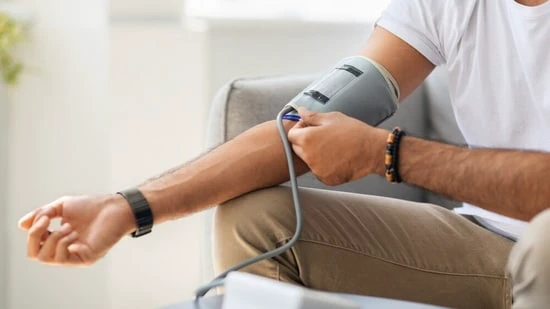Do you have a blood pressure measuring machine at home? Many households have a device that helps them monitor blood pressure. But are you doing it right?
In a post shared on July 28, Dr Dmitry Yaranov, MD, cardiologist, shared the right way to check your blood pressure.
The cardiologist warned, “You’re not checking your blood pressure – you’re just watching numbers change. I say this with love – but most people do it wrong. Legs crossed. Talking. Cuff over clothing. Wrong size. No rest. Then they panic when the numbers are ‘high’.” Here are the tips he posted:
How to check your blood pressure correctly?
The cardiologist listed 8 things to keep in mind when you are sitting down to check your blood pressure:
- Sit in a chair, back supported, feet flat on the floor
- Rest for 5 minutes before checking
- Keep your arm at heart level, on a table
- No talking or texting during the reading
- Use the correct cuff size – not too small, not too big
- Take 2-3 readings, 1 minute apart
- Write it down or use your device’s memory
- Bring your cuff to your next doctor’s visit – let them validate it
Bonus tip
Dr Yaranov also posted a bonus tip for patients to remember while checking their blood pressure. “Do NOT take it right after a workout, argument, or espresso. That’s not ‘your pressure’ – that’s adrenaline,” he warned.
Lastly, the cardiologist said, “Don’t guess. Don’t Google. Don’t gamble. Know your numbers – and measure them right.”
Blood pressure levels
According to the National Heart, Lung, and Blood Institute, here are the blood pressure levels you need to keep in mind:
| Systolic and Diastolic Pressure (mm Hg) | Systolic and Diastolic Pressure (mm Hg) |
|---|---|
| Normal | Less than 120 systolic pressure AND Less than 80 diastolic pressure |
| Elevated | 120 to 129 systolic pressure AND Less than 80 diastolic pressure |
| High Blood Pressure Stage 1 | 130 to 139 systolic pressure OR 80 to 89 diastolic pressure |
| High Blood Pressure Stage 2 | 140 or higher systolic pressure OR 90 or higher diastolic pressure |
| Hypertensive Crisis | Higher than 180 systolic pressure OR Higher than 120 diastolic pressure. Contact your doctor immediately |
The National Heart, Lung, and Blood Institute says that your blood pressures are written as two numbers separated by a slash: the first number is your systolic pressure, and the second number is your diastolic pressure.
